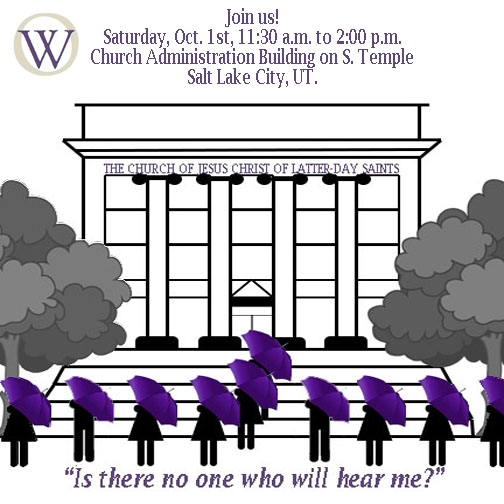Female White House staffers gradually gained access to what Hamilton fans might call the room where it happens, but “when they got there, their voices were sometimes ignored,” wrote Juliet Eilperin, The Washington Post’s White House bureau chief for domestic and foreign policy. “So female staffers adopted a meeting strategy they called ‘amplification’: When a woman made a key point, other women would repeat it, giving credit to its author. This forced the men in the room to recognize the contribution — and denied them the chance to claim the idea as their own.”
“’We just started doing it, and made a purpose of doing it. It was an everyday thing,’” said one former [White House aide].” The strategy worked. Increasingly, women were invited to meetings, and their input was not only solicited but integral to the discussion.
I love the idea of amplification as a cooperative feminist strategy, both before and after Mormon women have access to the rooms—locally and Churchwide—where the crucial decisions that affect all us happen. The work of Ordain Women—its profiles and its actions in particular—amplifies the individual voices of all who hope for a more inclusive Church just as the contributions of many in the Mormon feminist community amplify our collective message.
One example that dovetails nicely with Ordain Women’s upcoming October action is Emily Gilkey Palmer’s Exponent blog post “Holding the Umbrella.” Emily responds to a metaphor often employed in the LDS Church to explain why the present males-only priesthood policy shouldn’t bother women and children who “might be baffled by [women’s] exclusion” from priesthood ordination.
Relief Society general president Linda K. Burton used the umbrella metaphor in 2013: “I don’t think women are after the authority; I think they’re … happy that they can access the blessings and power of the priesthood … it doesn’t matter who holds [the] umbrella. They’re happy to let someone else hold the umbrella because we have different complementary roles and are happy with that.”
In the Primary version of the object lesson, a child is asked to stand and hold an umbrella. The other children are then invited to stand under the umbrella. The teacher then asks, “As long as everyone is under the umbrella, i.e., enjoys the blessings of the priesthood, does it matter who holds it?”
An Oregon native, Emily is more than familiar with umbrellas. She writes:
“If you take that experiment out into the rain it immediately falls apart.
“My years of experience tromping through endless rainstorms have taught me a bit about sharing umbrellas and I can confidently say that with a shared umbrella, the protection is always unequal.
“Point 1: The holder of the umbrella will hold it at a height that is comfortable for him or her. As for the co-shelterer, the tall become hunchbacked, the short tend to get wet.
“Point 2: Consciously or unconsciously, the holder tends to pull it over him or herself, so the other person gets wet. Even good efforts to protect the other person fall apart through inattention. No amount of cozy arm linking completely resolves this.
“Point 3: It is possible, with a large enough umbrella, to both huddle under it and remain reasonably dry if you stay in one spot. If you try to move forward, however, the above two rules come into play quickly and are exacerbated by the different gaits of the people in question.
“In other words, the umbrella analogy illustrates precisely the opposite of the intended message.”
“The only way for everyone to receive equal protection,” Palmer concludes, “is for everyone to hold their own umbrella. Indeed, if everyone in a crowd had an umbrella, there would be a roof and all would be protected. … We need a phalanx of able umbrella-teers.”
Yes, Emily, yes we do—especially in Salt Lake City on October 1st.






